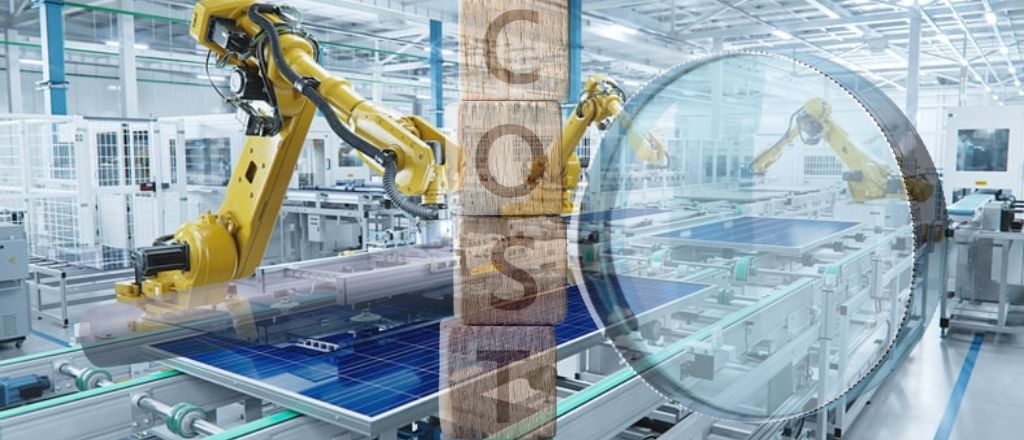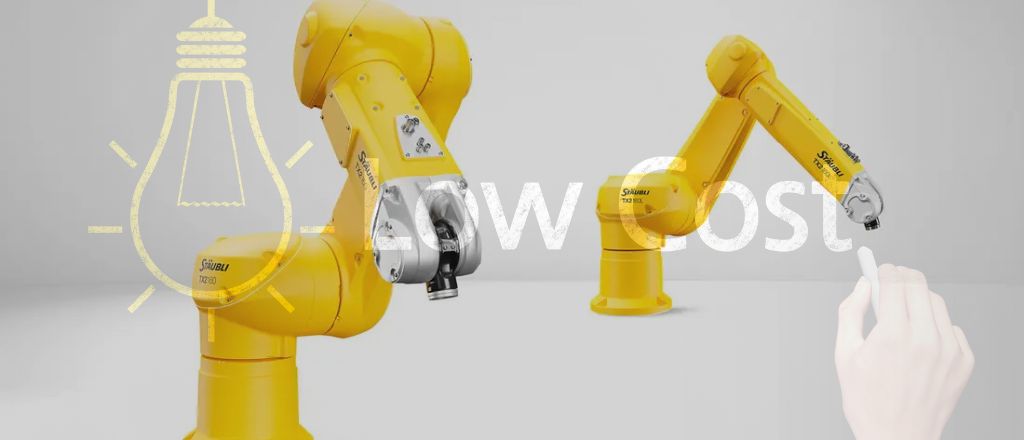The average price of industrial robots ranges from $25,000 to $100,000, depending on their functionality and complexity.
Industrial Robot Cost Breakdown for Informed Decision-Making

Industrial robots represent a significant investment for businesses aiming to streamline operations and enhance productivity. Understanding their cost structure is crucial for making informed purchasing decisions. The overall cost of an industrial robot includes the base price of the robot itself, integration costs, software, training, and ongoing maintenance. These costs can vary significantly depending on the complexity and functionality.
For instance, a standard industrial robot suitable for basic tasks may range from $25,000 to $50,000. In contrast, high-end robots with advanced capabilities, such as collaborative functions or AI-driven precision, can exceed $100,000. Beyond the initial purchase, companies must also consider the costs of programming, system integration, and employee training, which can add 20-30% to the overall expenditure.
Factors Affecting the Cost of Industrial Robots

Several factors influence the cost of industrial robots, and understanding these elements can help businesses determine the most suitable solution for their needs:
- Type of Robot: Robots designed for specific tasks, such as welding or painting, tend to cost more due to specialized components.
- Payload and Reach: The greater the payload capacity and reach of the robot, the higher its price.
- Degree of Customization: Custom robots built for unique industrial applications will incur higher development costs.
- Brand and Manufacturer: Leading brands often charge premium prices for reliability, support, and warranty coverage.
- Software Requirements: Advanced AI or machine learning integration software can add to the cost.
- Peripheral Equipment: Grippers, vision systems, and sensors required for the robot to function effectively also impact the price.
By carefully assessing these factors, businesses can choose an industrial robot that aligns with their operational goals and budget.
Exploring Low-Cost Industrial Robot Solutions

Not all industrial robots come with a hefty price tag. Affordable options are available for businesses willing to explore innovative solutions:
- Refurbished Robots: Purchasing pre-owned robots can significantly reduce costs while providing reliable performance.
- Entry-Level Models: Many manufacturers offer budget-friendly models for material handling or assembly tasks.
- Local Manufacturers: Partnering with local robot manufacturers can help cut shipping and customization expenses.
Additionally, leasing or renting robots is becoming popular for companies that wish to test automation solutions without committing to a complete purchase upfront.
Cost-Effective Industrial Robots for Small and Medium Enterprises

Small and medium enterprises (SMEs) often face budget constraints when considering industrial automation. However, cost-effective solutions tailored to SMEs are available:
- Compact Robots are smaller, less expensive, and ideal for limited workspace environments.
- Collaborative Robots (Cobots): Manufacturers design cobots to work alongside humans, providing flexibility and ease of use at a lower price than traditional robots.
- Pay-As-You-Go Models: Some providers offer subscription-based models where businesses pay a monthly fee for robot usage, making automation more accessible.
By leveraging these options, SMEs can enjoy the benefits of automation without overextending their budgets.
Understanding the Cost of Industrial Robot Arms

Industrial robot arms are a core component of many automation systems. Their costs depend on functionality, precision, and the complexity of the tasks they perform:
- Primary Robot Arms: Designed for tasks like material handling, these cost around $5,000 to $15,000.
- Advanced Robot Arms: High-precision arms with features like multi-axis movement and integrated vision systems range from $30,000 to $80,000.
- Custom Robot Arms: Tailored solutions for specialized applications can exceed $100,000, depending on requirements.
Understanding the cost breakdown of robot arms helps businesses select the right equipment for their specific operational needs.
Low-Cost Industrial Robotic Arms: Affordable Solutions for Automation

For businesses looking to embrace automation on a budget, low-cost industrial robotic arms offer an excellent starting point:
- DIY Robot Kits: Ideal for educational or light industrial purposes, these kits cost as little as $1,000.
- Simplified Arms for Specific Tasks: Robots designed for repetitive, single-function tasks are affordable and efficient.
- Open-Source Robotic Arms: These arms leverage open-source software and hardware, reducing overall costs and providing flexibility for customization.
By investing in affordable robotic arms, businesses can enhance efficiency and remain competitive without breaking the bank.
Let's Ask the expert Trevor
Building an industrial robot typically costs between $50,000 and $150,000, factoring in design, components, and development.
Large industrial robots designed for heavy-duty tasks can cost between $100,000 and $400,000 or more.
Warehouse robots, like AGVs or AMRs, usually cost between $20,000 and $50,000, excluding integration and software expenses.
The cost of a fully functional robot varies widely based on its purpose and complexity. Basic educational or hobbyist robots may cost a few hundred dollars, while advanced industrial robots used in manufacturing can range from $50,000 to $150,000 or more. High-tech humanoid robots or specialized service robots might cost upwards of $250,000. Additionally, the cost of programming, maintenance, and integration into existing systems can significantly increase the total expense. Factors like customization, sensors, and software capabilities also play a role in determining the final price. Businesses often assess their specific needs to ensure cost-effectiveness and return on investment.
Warehouses commonly use Autonomous Mobile Robots (AMRs) and Automated Guided Vehicles (AGVs). AMRs are equipped with advanced sensors and AI, enabling them to navigate dynamically and adjust routes in real-time. They’re used for picking, packing, and transporting goods. AGVs, in contrast, follow predefined paths using tracks or markers, making them ideal for repetitive tasks in structured environments. Robotic arms are also deployed for sorting, palletizing, and loading. Companies like Amazon use robotic systems integrated with warehouse management software to streamline operations, reduce errors, and improve efficiency. The choice of robot depends on the warehouse size, layout, and specific operational needs.
The most expensive robots are typically those designed for advanced industrial, research, or space exploration purposes. For example, NASA’s Mars rovers, such as Perseverance, are among the most expensive, costing billions of dollars to design, build, and deploy due to their sophisticated technology and ability to operate autonomously in extreme environments. In the commercial sector, robots like Boston Dynamics’ Atlas, designed for dynamic movement and complex tasks, are highly valuable, costing over a million dollars. The price reflects their cutting-edge technology, including AI, precision engineering, and durable materials, tailored for specialized tasks that surpass human capabilities in challenging conditions.
Robots are expensive due to the high costs of research, development, and materials used to create them. Developing a robot requires advanced engineering, state-of-the-art software, and precision manufacturing. High-quality materials, such as durable metals and specialized sensors, increase costs. Additionally, many robots require sophisticated AI and machine learning algorithms, which involve significant programming expertise and testing. Customization for specific tasks or industries further raises costs, as does the need for rigorous quality control to ensure reliability. Production volumes also influence price; many advanced robots are produced in limited quantities, making each unit more expensive compared to mass-market electronics.

